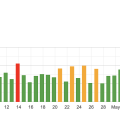So you think your website is safe from the dark side of the internet? Think again. In the eerie world of “Negative SEO,” malicious individuals can wreak havoc on your online presence without even lifting a finger on your own website.
This sneaky technique involves using underhanded tactics to sabotage your search engine rankings, leaving you puzzled and frustrated. But fear not, because in this article, we’ll explore what negative SEO is, how it can harm your website, and most importantly, how you can protect yourself from these devious attacks.
Let’s dive into the sinister world of Negative SEO!

What is Negative SEO?
Definition
Negative SEO refers to the practice of using unethical and malicious techniques to harm a competitor’s website’s search engine rankings. It involves exploiting the vulnerabilities of search engine algorithms in order to manipulate search results and penalize the targeted website.
Objective
The primary objective of negative SEO is to harm a competitor’s website by decreasing its visibility in search engine rankings. By employing various aggressive tactics, the attackers aim to push the targeted website down in search results, diminishing its online presence and ultimately causing a loss in traffic and revenue.
Methods
Various methods are employed in negative SEO campaigns, all of which are designed to exploit weaknesses in search engine algorithms. These methods include spammy link building, negative reviews, content scraping, and DDoS attacks, among others. Each technique is intended to create a negative impact on the targeted website’s SEO performance, leading to a drop in rankings and potentially incurring penalties from search engines.
Effects of Negative SEO
Rankings Manipulation
One of the most significant effects of negative SEO is the manipulation of search engine rankings. Competitors with malicious intentions can employ black hat techniques, such as building spammy and low-quality backlinks, to the targeted website. This illicit practice leads search engines to perceive the website as less credible and authoritative, resulting in a decline in rankings.
Website Penalization
Negative SEO can also result in search engines penalizing the targeted website. Search engines, like Google, have strict guidelines regarding acceptable SEO practices. When a website is found to be engaging in unethical techniques or manipulating search engine results, it can be penalized, leading to a substantial drop in rankings or even removal from search engine results altogether.
Loss of Traffic and Revenue
As a consequence of rankings manipulation and website penalization, negative SEO ultimately leads to a loss of organic traffic and revenue. When a website’s visibility is diminished in search results, it receives fewer clicks, resulting in decreased traffic. This reduction in traffic directly impacts the potential for generating revenue, making it a significant concern for businesses and website owners.
Identifying Negative SEO
Sudden Ranking Drops
One of the clear indicators of a negative SEO attack is a sudden and significant drop in search engine rankings. If your website was previously performing well in search results and suddenly experiences a decline, it could be a sign that it has become a target of negative SEO practices. Monitoring your website’s rankings regularly can help you identify and address such drops promptly.
Unnatural Backlink Profiles
Another telltale sign of negative SEO is the presence of unnatural backlink profiles. Black hat practitioners may create spammy and irrelevant backlinks pointing to your website in an attempt to manipulate search engine rankings. Many tools allow you to analyze your backlink profile and identify any suspicious or low-quality links that may have been created maliciously.
Copied Content or Malware
If you notice that your website’s content has been copied or plagiarized on other websites, it could be a result of negative SEO. Attackers may scrape your content and publish it elsewhere to dilute the uniqueness and authority of your website. Additionally, if your website becomes infected with malware or experiences a sudden increase in security threats, it could be a sign of a negative SEO attack.
Common Negative SEO Techniques
Spammy Link Building
Spammy link building is one of the most commonly employed negative SEO techniques. Attackers create large volumes of low-quality, irrelevant, and unnatural backlinks pointing to the targeted website. These manipulative practices aim to trick search engines into perceiving the website as less authoritative, leading to a decline in rankings.
Negative Reviews
Another method of negative SEO involves leaving malicious and fake negative reviews on review platforms or business directories. By damaging a company’s online reputation, attackers try to drive potential customers away and tarnish the targeted website’s credibility. These negative reviews can quickly impact the trust and perception of a brand.
Content Scraping
Content scraping is a technique where attackers plagiarize and copy a website’s content to publish it elsewhere on the internet. This not only dilutes the authenticity and uniqueness of the original content but can also lead to search engines penalizing the targeted website for duplicate content. This practice aims to diminish the targeted website’s authority and credibility.
DDoS Attacks
A Distributed Denial of Service (DDoS) attack involves overwhelming a website’s servers with a flood of incoming traffic, effectively rendering the website inaccessible. While DDoS attacks may not directly impact search engine rankings, they can cause significant disruptions to a website’s availability and user experience, ultimately leading to a loss of traffic and revenue.

Protecting Your Website from Negative SEO
Regular Website Monitoring
Regularly monitoring your website’s performance and rankings is crucial to detect any sudden drops or suspicious activity. By staying vigilant, you can identify negative SEO attacks early on and take appropriate measures to mitigate the damage.
Monitoring Backlinks
Maintaining a close eye on your website’s backlinks is essential to identify any spammy or unnatural links that may have been created maliciously. Utilize backlink analysis tools to regularly review your backlink profile and disavow any suspicious links that could harm your website’s SEO.
Disavowing Unwanted Links
If you discover harmful backlinks pointing to your website, it is crucial to disavow them promptly. Disavowing links is a process where you inform search engines that you do not endorse or want any association with specific backlinks. This helps to prevent negative SEO attacks from impacting your website’s search engine rankings.
Securing Website
Taking measures to enhance your website’s security is vital in protecting it from negative SEO attacks. Regularly update and patch any vulnerabilities in your website’s CMS or plugins, implement SSL certificates for secure browsing, and use robust firewalls and malware detection tools to thwart potential attacks.
Dealing with Negative SEO Attacks
Gathering Evidence
If you suspect your website has become a victim of negative SEO, it is important to gather evidence to support your claim. Document any sudden drops in rankings, collect data on suspicious backlinks, and take screenshots of copied content or malware infections. This evidence will be valuable when contacting search engines or taking legal action.
Contacting Search Engines
When faced with a negative SEO attack, contacting search engines can help rectify the situation. Inform them about the attack, provide evidence of the malicious practices, and request an investigation. Search engines like Google have established mechanisms to address and mitigate the impact of negative SEO on websites.
Legal Actions
In severe cases of negative SEO, where the attack has caused significant harm to a website’s rankings and revenue, legal action may be necessary. Consult with a legal professional with experience in digital law to explore the available options and determine the most appropriate course of action.
Recovering from Penalties
If your website has been penalized by search engines as a result of a negative SEO attack, it is essential to take steps to recover from the penalties. This may involve disavowing harmful backlinks, improving the quality and relevance of your content, and implementing an effective SEO strategy. Recovery from penalties can be a lengthy process, but with dedicated effort, it is possible to regain lost rankings and traffic.

Case Studies on Negative SEO
Examples of Negative SEO Attacks
Several high-profile websites have fallen victim to negative SEO attacks, highlighting the seriousness and prevalence of this issue. For example, in 2018, a prominent e-commerce platform experienced a massive drop in search rankings due to an influx of toxic backlinks. The attack resulted in a significant decrease in organic traffic and revenue, requiring an extensive recovery effort.
Successful Recovery Strategies
While negative SEO attacks can be devastating, there are instances where website owners have successfully recovered from them. By promptly identifying the attacks, leveraging the support of search engines, and implementing robust SEO strategies, websites have been able to regain their rankings and mitigate the negative impact of the attacks.
Ethical Dilemma Surrounding Negative SEO
Is Negative SEO Ethical?
The practice of negative SEO is widely regarded as unethical and malicious. It involves intentionally harming a competitor’s website without any regard for fair competition and adhering to acceptable SEO practices. Negative SEO undermines the principles of transparency, integrity, and fair play that should govern the digital landscape.
Legal and Ethical Implications
Negative SEO carries legal and ethical implications for both the attacker and the targeted website. The attacker may face legal consequences for engaging in illegal practices, while the victim must grapple with the aftermath of the attack. Negative SEO not only damages businesses financially but also erodes trust and weakens the digital ecosystem as a whole.

Prevalence of Negative SEO in the Digital World
Industries Prone to Negative SEO
While negative SEO can target any business or industry, some sectors are more susceptible to such attacks. Highly competitive industries, such as finance, e-commerce, and online gaming, often witness a higher prevalence of negative SEO due to the potential financial gains associated with manipulating search rankings.
Businesses and Websites at Risk
All websites, regardless of their size or industry, are potentially at risk of negative SEO attacks. Whether it’s a small local business or a large multinational corporation, any website that competes in the digital landscape can become a target. It is crucial for website owners to remain vigilant and take necessary precautions to protect their online presence.
Conclusion
Understanding negative SEO is crucial for every website owner and digital marketer. By recognizing the potential methods employed by attackers, the effects of negative SEO, and the steps to identify and protect against it, website owners can make informed decisions to safeguard their online presence. Taking regular precautions, monitoring your website’s performance, and promptly addressing any negative SEO attacks are essential steps to mitigate the impact and recover from such harmful tactics.












